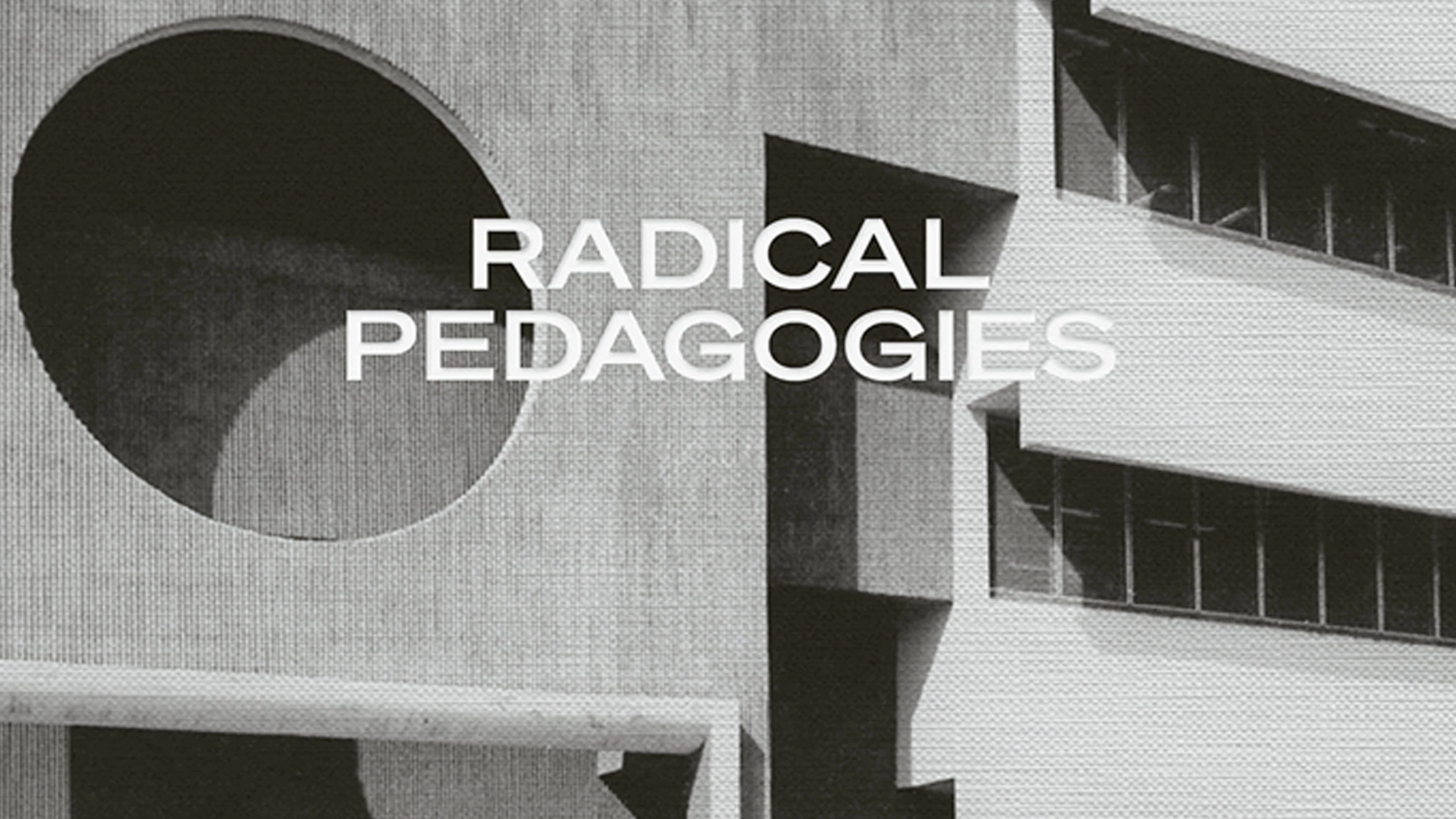
The battle of ‘modernity’ was waged not only in the field of forms and techniques, but also in that of ideals. It has been necessary to acknowledge that modernity was ‘ideological’ for it to be assessed with detachment, and that the modern ideology had as much to do with media as with discourses.
Beatriz Colomina brings to light the ideological and mediatic side of ‘modern,’ and her academic project, aided by a gift for spotting themes ignored by critics, has now yielded Radical Pedagogies, which is no lesser work.
Certainly not in size: 400+ pages of small print and excellent illustrations. Not in its collaborators: 100+ voices from universities around the world. Not in ambition: the theme is a key dimension of the mission of spreading and revising modernity, namely pedagogy, focusing on the many educational reform experiments that were conducted in the heat of the ideological, political, and professional crises of the second half of the 20th century, especially the ‘interesting’ 1960s and 1970s.
The method used is kaleidoscopic criticism. Instead of composing a metatext out of long-range revisions, the editors have with an itch for exactitude gathered almost the entire pool of pedagogical projects that, from the immediate postwar onward, tried to call conventional teaching models into question. Such determination to tackle the specificity of each case, combined with a desire to include cases outside of the predictable Western examples, results in fragments, partial views, and flashes that the reader has to deal with one by one, confronting the intensity of each lesson to recompose the parts of the puzzle or the pieces of a vast kaleidoscope.
Do not expect the usual monograph, nor an encyclopedia. The book is basically an archive: an orderly collection of materials which, thanks to the editors’ organizational dexterity, are presented under the light provided by experts. The fragmentary method allows tackling a near-unlimited theme, and flexibly at that, as we can see in the two indexes that complement each other. One is thematic, addressing matters like form, theory, the media, the global, technology, ecology, or the social; and the other chronological and arranged by decade. The implicit message here is that it is up to the reader to appropriate the contents for future explorations.
But if the kaleidoscope has its good points, it also has defects. Some are injustices of the kind one finds in all anthologies, which inevitably leave out important examples. Others come from the radicality of the method: unconnected to one another, drowning in their fragmentedness, the materials fail to form a discourse, and what’s missing overall is a view of longer periods, less analytical than synthetic and ultimately more fertile for hermeneutic purposes.
Still, it would be unfair not to acknowledge the book’s abundant information and its potential as a catalyst for the necessary further research, besides the relevance of its subject matters at a time of confusion and change, of criticism and crisis, for architects, professors, and students alike.







